The key to Web3 success: abstracting away complexity
Back in the 90s, crypto expert Nick Szabo coined the term “smart contract”. In a paper published in 1997, he wrote that smart contracts “combine protocols with user interfaces to make relationships in computer networks more formal and secure.” In short, smart contracts are self-enforcing, their buyers and sellers The terms of the agreement between them are embedded directly in the line of code.
To explain smart contracts, Nick Szabo uses the humble vending machine as an example:
In vending machines, the trading rules are programmed into the machine. You press the numbers, choose the item you want to buy, and put in the money. If enough money is put in, the machine will spit out the product. The written rules thus execute a transaction.

The principle of smart contracts is similar, and they are essential for Web3. Write the rules directly into the code, and the smart contract can be traded without going through an intermediate link. Vending machines allow you to buy snacks without going through a vendor; smart contracts allow you to get anything done without going through bankers, accountants, lawyers, or other middlemen.
Web3 is a hot word in 2021, and by 2022, it will be more mainstream, maybe it can become an early contender for “Word of the Year” by Oxford Dictionaries?

Google searches for “What is Web3?” Steady Rise in Q4 2021
In media coverage, “Web3” is rapidly replacing “crypto” as the umbrella term describing a decentralized, user-owned secure web. In my opinion this is a good thing: Web3 means progress and innovation, while crypto is associated with complexity, speculation and a dozen other negative associations that have (unfortunately) gone over the past decade. Being solidified, today could derail the sport. Web3 may be a necessary rebrand.
But here’s the thing about Web3: most people will never know it exists.
The reason is that Web2 is a front-end revolution, and Web3 is a back-end revolution . In other words, Web2 reshapes the interface people interact with, while Web3 recreates the mechanics behind the screen. This doesn’t mean that Web3 won’t become an equally important movement – it will revolutionize industries and reshape outdated power structures. And individuals, companies, and organizations that can succeed in Web3 must be able to abstract away its complexity .
For example, one does not need to understand how cryptocurrency mining works, nor do they need to know about mining equipment. In fact, it might be better to hide this stuff in the background.
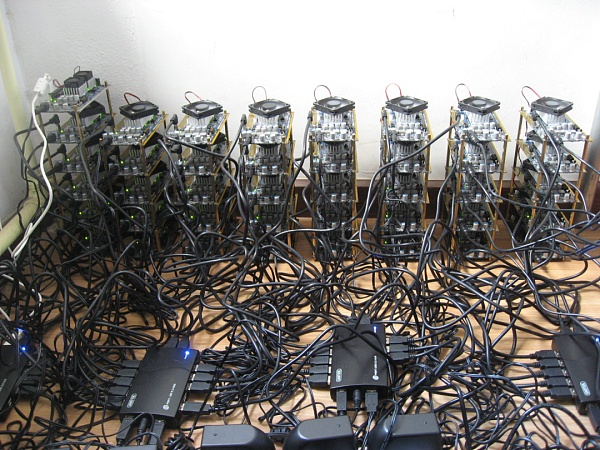
Bitcoin mining rigs; Web3 should abstract away complexity
Ordinary people don’t know about blockchain, fungibility, or stablecoins. Nor do they need to know. Most people today don’t know about HTTP, the hypertext transfer protocol developed in 1989 that drives the World Wide Web, but they rely on it every day.
That’s why a vending machine is a good analogy. Most people don’t understand how vending machines work, but the average person spends $62 a year on a vending machine. People don’t need to understand the inner workings — unless they’re a vending machine repairer. (To make an analogy in our digital world, they might be smart contract engineers.) But people know enough: you put money in, and a can of soda comes out. This is enough.
Web3 is not yet “crossing the chasm” – we are still in the “early adopter” stage of the technology adoption cycle. Although OpenSea will have $14 billion in transaction volume in 2021, it has only about 250,000 active buyers and sellers; 70% of its transaction volume comes from only about 20,000 users. And Ebay has 183 million buyers.
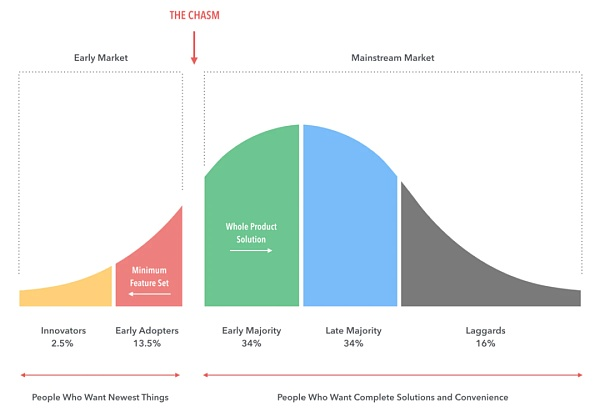
Technology Adoption Lifecycle
Crypto adoption is currently going at the same rate as the early internet adoption.
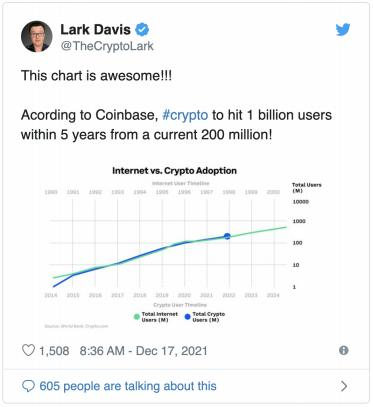
Web3 adoption is just starting but without the right infrastructure layer, will take up till ~2027 to hit 1 Billion users.
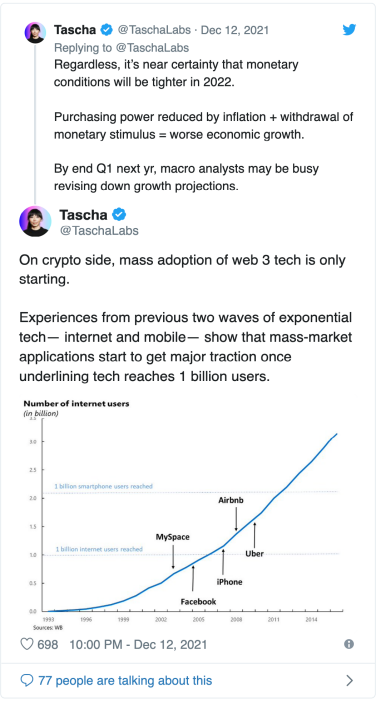
If we can bring crypto natively to mobile devices, we can change the slope of this growth curve.
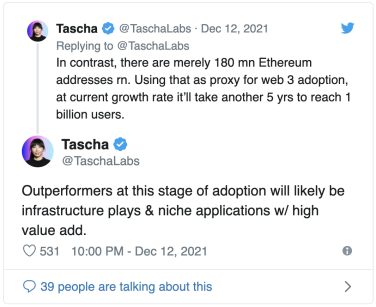
To become mainstream, Web3 needs to be easy for ordinary people to use. The best way to do this is a Web3 phone to abstract complex concepts away with easy-to-understand metaphors.
Analogy 1: Web3 wallets are like real wallets.
Your Web3 Wallet is your gateway to the Web3 world. In its simplest form, your wallet is a piece of software that allows you to send and receive cryptocurrency securely without relying on a third party. You can use MetaMask on Ethereum, Phantom on Solana, or Terra Station on Terra. In order to enter the Web3 world, people need wallets.
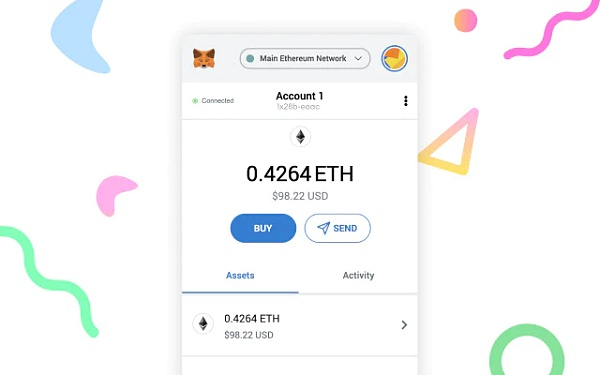
A MetaMask wallet
Thankfully, “wallet” is a familiar concept – Web3 wallets work in a familiar way. Just as a physical wallet contains your driver’s license, gym membership, Costco membership, and other identifiers, your digital wallet contains your digital identity. Just like you open your physical wallet to reveal your identity when you swipe your card at a bar, you open a digital wallet online to reveal your digital credentials. For example, when I buy something on OpenSea, I show my MetaMask wallet.
Wallets contain two types of keys: public and private keys. The public key is equivalent to an account number and can be shared with anyone at will. However, private keys are (unexpectedly!) private – you can think of them as a password that only you know. But Washgill uses a metaphor that I prefer – here’s our second metaphor:
Analogy 2: The public key is like a padlock.
Imagine I want to send you a message, but I don’t want anyone to intercept it. I ask you to send an (unlocked) padlock and you will keep the key. I put my letter in a box, lock it with your padlock, and send it back to you. Only you, with your padlock key, can open it to receive messages. The padlock is the public key; your padlock key is the private key.

love lock bridge in Paris
People can understand these concepts intuitively because they are not new. But what is lacking today is a Web3 solution. For example, MetaMask was originally designed for developers. Although it has more than 20 million users, it is far from intuitive. A winning product in Web3 must remove all complexity. For billions of people to use Web3, products need to be as simple as they are beautiful. In addition to specific metaphors, there are broad concepts familiar to the public that will help demystify Web3.
Take decentralization as an example. “Decentralized” is an intimidating word. People espouse centralism and agree with the existence of those in charge; if not expressed properly, decentralization can convey a state of loss of control. But instead, decentralization should convey a sense of autonomy—more power and wealth no longer flow to the gatekeepers, but to the people. I often think of a quote from Vitalik:
While most technologies tend to automate peripheral, repetitive workers, blockchain automates the center. Instead of putting taxi drivers out of a job, blockchain will put Uber out of a job because taxi drivers work directly with customers.
The idea of “removing the middleman” struck a chord. “Power belongs to the people” resonated – and it’s one of the reasons why ConstitutionDAO has been so successful (about half of the $47 million in donations to ConstitutionDAO had first created Web3 wallets to make donations). But these concepts are not yet perfect. People may ask, what if I want to make a complaint? I can no longer speak to an Uber customer service representative. These are issues that need to be addressed, and my view is that full decentralization will be the case. Conversely, the world will be more decentralized while still retaining some degree of centralization; again, most people want someone accountable for things and are willing to pay a small fee for a convenient and reliable service.
Another widely understood concept is scarcity . People may not understand the meaning of non-homogeneity, but they understand the scarcity or uniqueness of things. Any gamer understands scarcity in the digital world. Last year, gamers spent $54 billion on digital items in the gaming economy, and that spending will grow to $74 billion by 2025 . In fact, players of Fortnite are interacting .

Marshmallow skins in Fortnite
The well-understood concepts can also be extended to other parts of the Web3 universe. For example, people understand the concept of return on investment, and looking at tokens in this light may be helpful to some. People also understand the concept of access, and tokens acting as tickets enable people to gain access to thresholded content or events that will drive further mainstream adoption.
A DAO, by itself, makes it easier to understand by thinking of it as a community or a democracy. The DAO implements a democracy-like system. Most DAOs have a very low “voter turnout” (like we do in the real world), and it’s even more like a representative democracy. People trust others—designated authority figures, considered more “visionary”—to make decisions. Most people are reluctant to read lengthy proposals to make decisions, it is human nature. The community of DeFi protocol Yearn has recently proposed a decentralized governance system that allows YFI holders to elect a committee to manage budgets and plan development.
When people stop using obscure words (“Ethereum”, “blockchain”, “fungibility”) and stop thinking of Web3 as a mysterious black box, but as a set of easy-to-understand concepts ( “scarcity”, “access”, “community”), they will be more open to this new model. Products need to move closer to simplicity.
Back in the 90s, the web was just as elusive. Ordinary people simply don’t know how to access it. Then AOL came along. AOL’s slogan is “Easy to use, No. 1”. AOL removes complexity with a user-friendly interface.
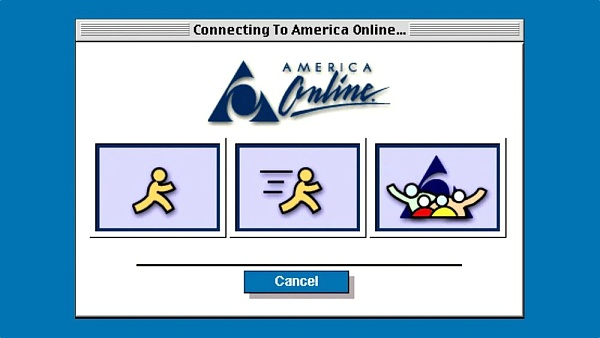
Jarrod Dicker and Jonathan Glick recently wrote:
Ted Leonsis, who has led many of these movements and whose company was acquired by Steve Case in 1994, once said, “I spend most of my time keeping things simple.” One of the most apt and famous examples is Audio that rewards users for returning to the service again and again. It announces the reward in three simple words: “You’ve got mails!”
A natural question is: what will AOL for Web3 be?
The opportunities are huge. AOL’s market cap at its peak was $350 billion in today’s dollars. (Unfortunately, it ended up selling for about 1% of its price.) What would be AOL in the crypto industry? It will be a killer product that will enable billions of users to choose Web3, and the process should be logical and easy to obtain.
At the end of the day, Web3 needs two things. 1) Easy to use product 2) Killer use case. The winning company will have both.
2021 is a big year for Web3, with significant progress on all fronts. However, most people still do not know what blockchain is. The point is, that’s enough — they don’t need to know, and they probably never will . The vast majority of people will never know they are interacting with the blockchain because its complexities are hidden behind a beautiful and familiar interface.
From an “easy-to-use product” perspective, a Wb3 phone is a good place to start.
